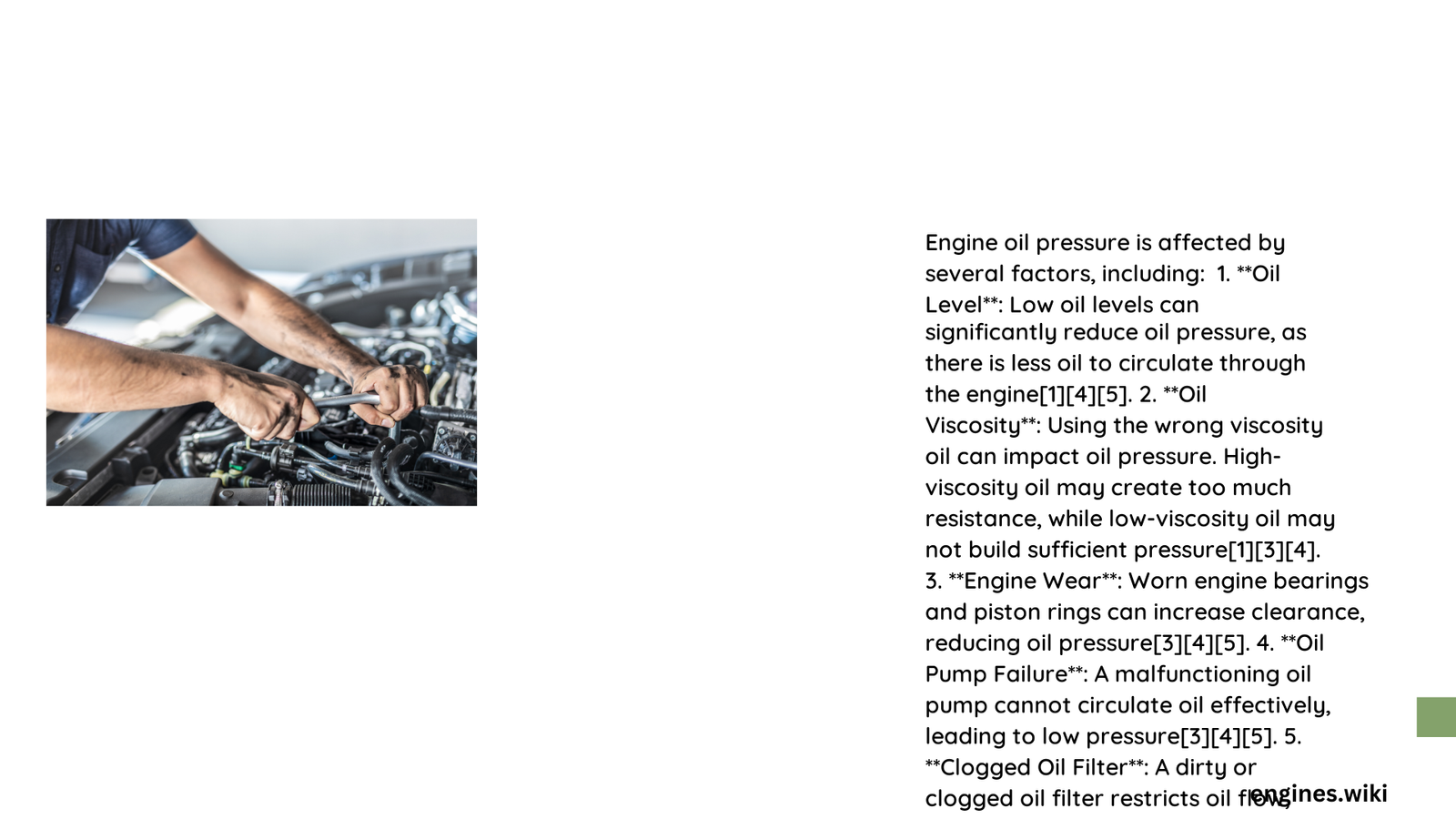Engine oil pressure is a critical parameter that determines the health and performance of an automotive engine. Multiple interconnected factors dynamically influence oil pressure, ranging from mechanical components like oil pumps to environmental conditions such as temperature. Understanding these variables helps mechanics and vehicle owners diagnose potential issues, prevent engine damage, and maintain optimal lubrication systems.
What Causes Variations in Engine Oil Pressure?
How Does Oil Viscosity Impact Pressure?
Oil viscosity represents the fundamental determinant of engine oil pressure. Different viscosity grades demonstrate unique pressure characteristics:
| Viscosity Grade | Cold Temperature Performance | Hot Temperature Performance | Typical Pressure Range |
|---|---|---|---|
| 5W-30 | Excellent flow | Moderate viscosity | 25-40 PSI |
| 10W-40 | Good flow | Higher viscosity | 35-50 PSI |
| 15W-50 | Moderate flow | High viscosity | 40-60 PSI |
Key Viscosity Insights
- Lower viscosity oils flow more easily, reducing resistance
- Higher viscosity oils maintain better pressure at elevated temperatures
- Manufacturer recommendations are crucial for selecting appropriate oil
What Role Does Oil Pump Performance Play?
The oil pump serves as the critical mechanism for generating and maintaining oil pressure. Its performance depends on several factors:
- Mechanical Integrity
- Wear and tear reduces pumping efficiency
- Damaged rotors or gears compromise pressure generation
-
Regular maintenance prevents premature failure
-
Flow Rate Capabilities
- Typical flow rates range between 10-20 liters per minute
- Pressure output typically maintained between 25-65 PSI
- Engine size and design influence pump specifications
How Does Engine Temperature Affect Oil Pressure?
Temperature dramatically influences oil behavior and pressure dynamics:
- Cold Start Conditions
- Higher viscosity leads to increased pressure
- Pressure readings might reach 40-60 PSI
-
Oil takes time to circulate effectively
-
Operating Temperature
- Oil thins, reducing resistance
- Pressure stabilizes around 30-50 PSI
- Optimal range typically between 195°F to 220°F
What Impact Do Filters Have on Oil Pressure?
Oil filters significantly influence pressure characteristics:
- Clogged filters increase system resistance
- Potential pressure drop of 5-10 PSI
- Regular filter replacement maintains consistent pressure
Diagnostic Strategies for Oil Pressure Issues
Warning Signs
- Fluctuating pressure gauge readings
- Unusual engine noise
- Reduced lubrication performance
- Unexpected warning lights
Recommended Actions
- Use manufacturer-recommended oil
- Perform regular maintenance
- Monitor oil pressure consistently
- Address issues promptly to prevent engine damage
Technical Recommendations

- Always use oils matching manufacturer specifications
- Replace oil filters at recommended intervals
- Use high-quality synthetic oils for better performance
- Monitor oil pressure during routine inspections
Conclusion
Understanding what affects engine oil pressure requires comprehensive knowledge of mechanical, thermal, and chemical interactions within the lubrication system.
